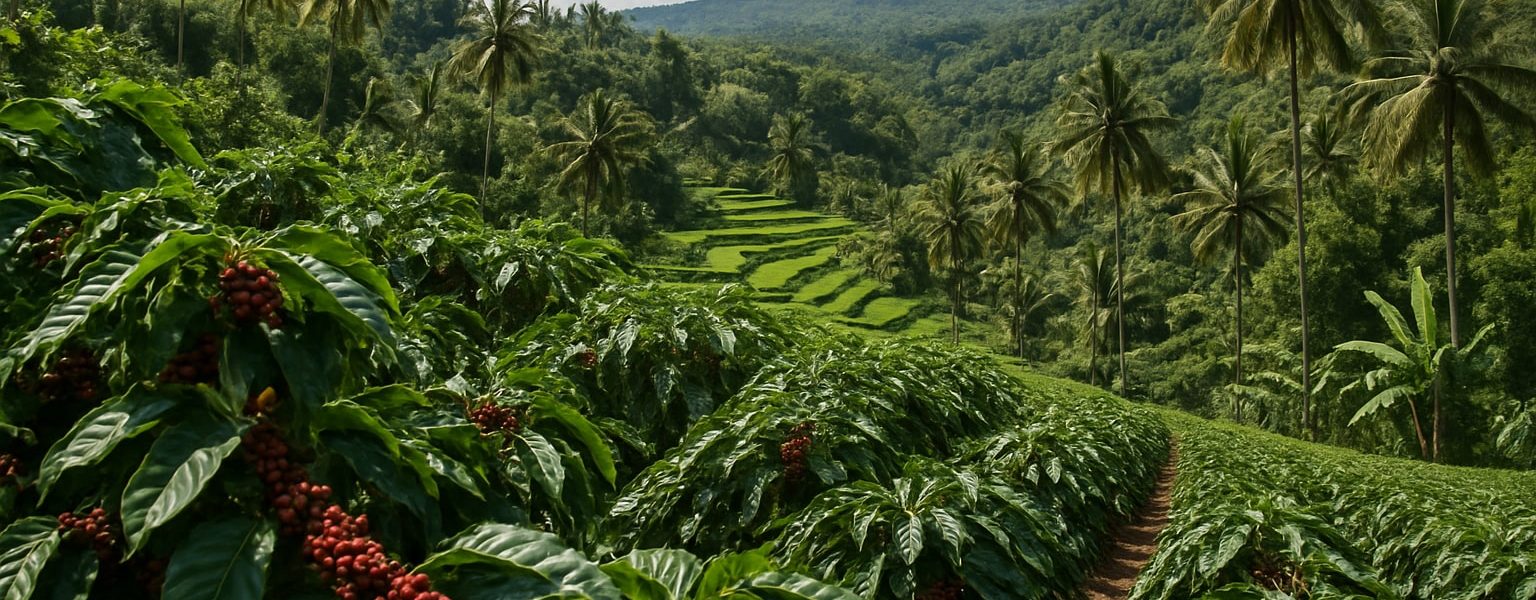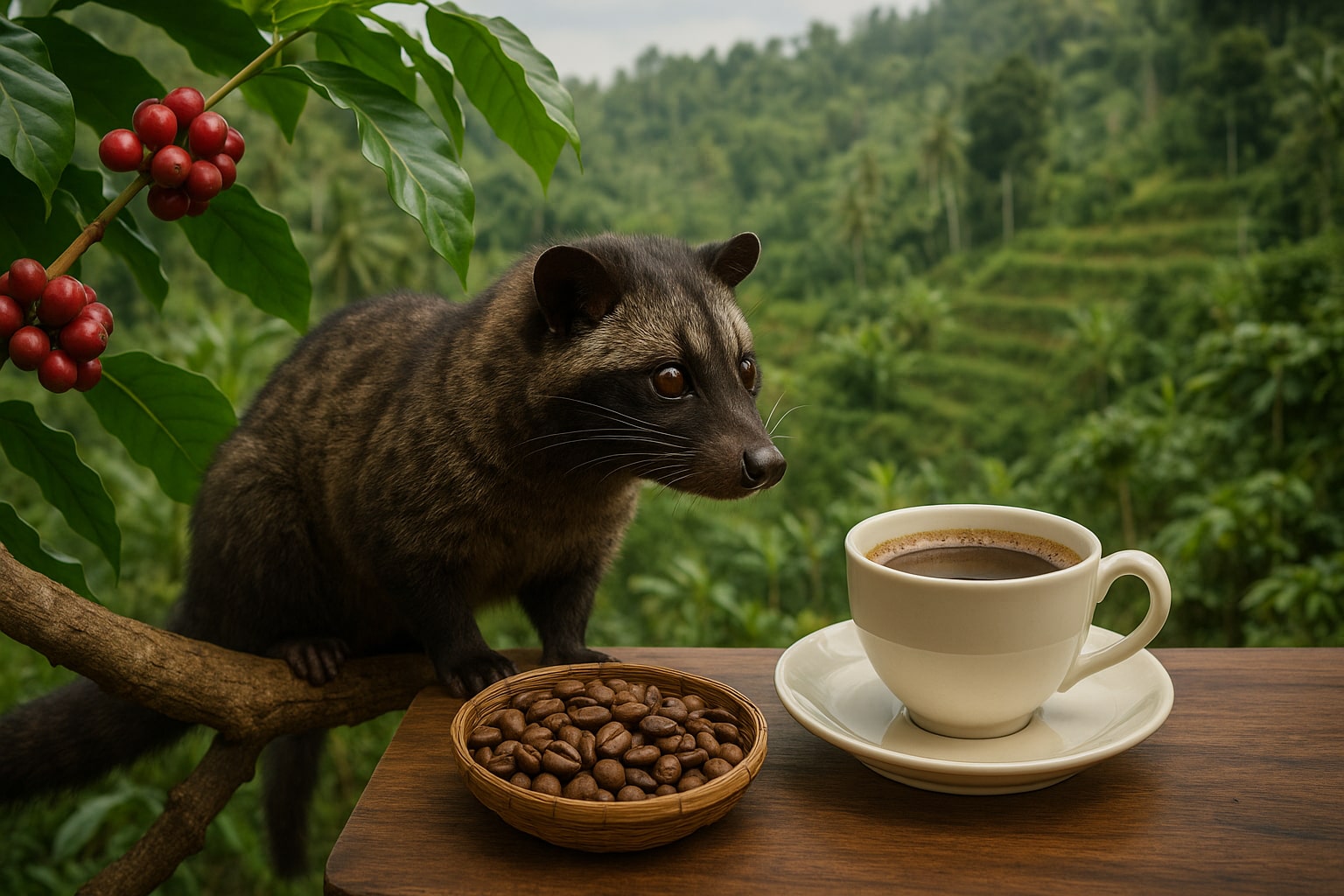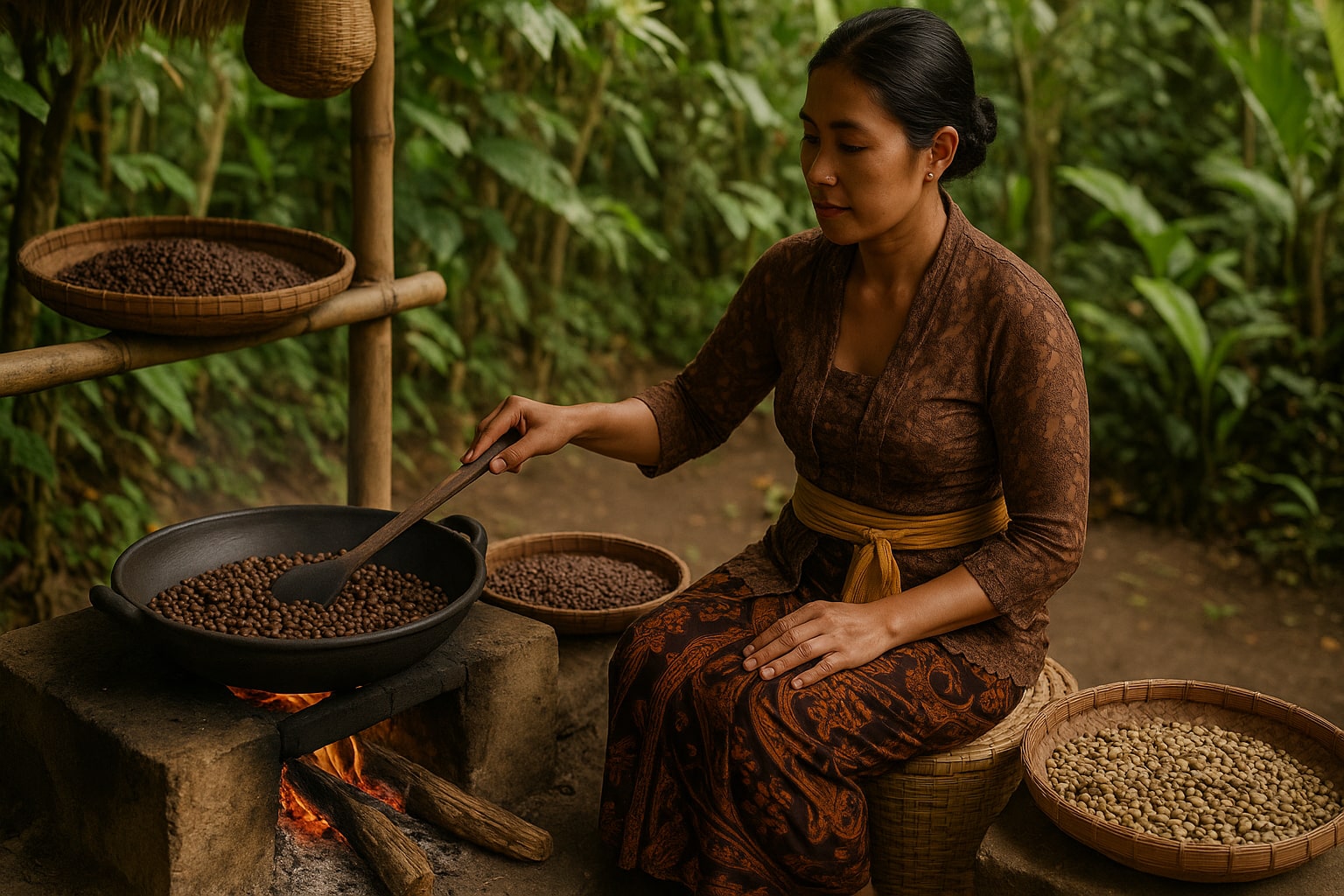If you’re planning a trip to Bali and even kind of into coffee, stopping by a coffee plantations in Bali should honestly be on your list. No fluff here—I’m telling you this as someone who’s tasted beans straight from the branch and nearly burned my tongue on a too-hot kopi tubruk in the highlands.
Now, Bali ain’t just beaches and beach clubs. Once you head a little inland, especially up toward Ubud, Kintamani, or even the Tegalalang area, you’ll start seeing all these signs for local coffee farms, “Luwak Coffee Tastings,” or “Bali Agro-Tourism.” Some of ‘em look a bit too polished (you know, like the kind where you leave feeling like you paid more for a photo op than a coffee experience), but others? Man, they’re something else.
Let’s break it all down, from the experience itself to how to choose where to go, what you’ll learn, taste, and even which plantations are worth the Grab ride.
Bali Coffee Culture – Not Just Instagrammable Cafés
Most tourists only scratch the surface with that cute cappuccino in Canggu or that artsy flat white in Ubud. But Balinese coffee—real Balinese coffee—is a whole vibe. It’s earthy, dark, sometimes gritty, and always made with care.
One thing that took me by surprise the first time? How spiritual the coffee-making process is in traditional villages. Like, we’re not talking Starbucks efficiency. We’re talking people who grow, pick, sun-dry, roast, and grind their own beans in backyards that overlook rice terraces and volcanoes.
Some of these families have been doing this for generations. The connection they have to the land, the process, even the weather—it’s wild.
Arabica, Robusta, and the Legendary Luwak Coffee
So Bali mostly grows two types of beans—Arabica and Robusta. Arabica grows up in the higher altitudes (think Kintamani), and it’s lighter, more acidic, more floral sometimes. Robusta’s your strong, bold, knock-you-awake kind of brew.
But then there’s Kopi Luwak—yep, the famous “poop coffee.” And yeah, it’s a thing. They collect beans that’ve been eaten and digested by civet cats, clean ’em (I hope thoroughly), roast ’em, and serve you this earthy, smooth cup that tastes surprisingly mellow considering the journey it took to your mug.
Now, is it worth the price? Depends. Some folks swear by the flavor. Others do it just to say they did. I’m somewhere in the middle—it was cool, but I’d rather support ethical farms that don’t cage the civets, ya know?
What to Expect at a Coffee Plantations in Bali (No Fluff, Just Real Talk)
Okay, so first thing: most plantations offer a free tour and tasting. I know, sounds shady, right? But it’s legit. The idea is, they walk you through the process, give you a little education, let you sip 10-15 tiny cups of different coffees and teas, then hit you with the gift shop. Zero pressure though. I’ve walked out without buying a thing.
That said—if you love what you taste, buying a bag or two helps keep these family businesses running.
Walking Through the Plantation
You’ll usually be guided by someone from the family or a staff member who knows their stuff. They’ll show you:
- Coffee trees (yep, the fruit is red when ripe—called “coffee cherries”)
- How beans are picked and dried under the sun
- Manual roasting over an open flame (some still use clay pots and wood fire)
- Grinding with a stone mortar and pestle
- The best tours let you actually try roasting or grinding yourself. And lemme tell you—those suckers are heavy. Makes you appreciate every cup a whole lot more.
One time I tried roasting in Kintamani, and my arm was sore for two days. Not even kidding.
The Tasting Session (Highlight of the Trip for Me)
This part’s the best. You sit down at a wooden table, usually overlooking the jungle or rice fields. They bring out a wooden tray with 10-15 little glasses lined up—each with a different flavor.
You might taste:
- Ginseng coffee
- Vanilla coffee
- Ginger tea
- Lemongrass tea
- Turmeric tamarind tea
- Hot cocoa (made from their own cacao beans)
Everything is made from ingredients grown right there or nearby. The ginger one kicked me in the face. The coconut coffee though? Chef’s kiss.
You can try the Luwak coffee too, but that’s usually extra—around 50K–100K IDR per cup. Worth it for the story if you’re curious.
Check also our post about Ulun Danu Beratan Temple
Best Areas for Coffee Plantation Tours in Bali
Alright, let’s get specific. Not all areas are equal when it comes to coffee experiences. Here’s what I’ve learned the hard way (and by hard way, I mean paying for a tour that was 90% souvenir shop).
Kintamani – The OG Arabica Highlands
If you’re into specialty coffee, head to Kintamani. It’s cooler up here, so Arabica grows like a dream. The volcanic soil makes for complex flavors—sometimes citrusy, sometimes nutty. You also get killer views of Mount Batur.
Farms like Bali Beans, Toya Bungkah Coffee, or Catur Coffee Company are run by local families but are getting noticed by the specialty coffee scene. Some even export.
One time I stopped at this tiny place with no sign—just a hand-painted board that said “Coffee Luwak – Try Free.” I was skeptical. But it turned out the family had been growing beans there for 40+ years, and their Luwak was wild-sourced, not farmed. That cup was smooth as silk. Zero bitterness.
Ubud & Tegalalang – Tourist-Friendly but Still Worth It
Closer to the center of Bali, Ubud and Tegalalang are packed with agro-tourism stops. Yeah, some feel a bit staged. But others, like Satria Agrowisata or Bali Pulina, really nail the balance between educational and Instagrammable.
They’ve got those epic jungle swings, too, if you’re into that sort of thing. But I’d go for the view and stay for the coffee.
Also, if you’re driving through Tegalalang, just slow down near the rice terraces. You’ll see handmade signs that say “Coffee Tasting” or “Visit Our Plantation.” The smaller, less advertised ones are sometimes way more authentic.
Planning Your Coffee Tour – What I Wish I Knew Earlier
If I had a buck for every time I showed up at a spot only to find out it closed early or wasn’t running tours that day, I’d have… like, maybe enough for another cup of kopi susu. Still annoying though.
So here’s what I’ve learned.
Go Early in the Day
Most plantations are open by 9 or 10 AM and close around 5 PM. But here’s the thing—the earlier you go, the cooler it is, especially in the hills. Plus, fewer crowds. I went to Bali Pulina once around 4 PM, and half the trays were already done for the day.
Also—traffic in Bali is no joke. A 10km drive can easily be an hour. So budget for that.
Wear Closed Shoes (Trust Me)
Some of the paths are muddy, rocky, or just awkward to walk on. Flip-flops won’t cut it. I wore sandals once and slipped trying to roast beans on this little platform. Not my proudest moment.
Don’t Skip the Shop (Even if You’re Not Buying)
Even if you’re not planning to buy anything, walk through the shop. Why? You’ll see stuff you’ve never heard of—like coffee soap, ginger body scrub, or lemongrass essential oil that smells like straight-up heaven.
And sometimes they’ll give you extra free samples in the shop if you chat a bit. Balinese hospitality is unmatched.
Coffee in Balinese Daily Life – It’s Not Just for Tourists
This part kinda blew my mind. Coffee in Bali isn’t just a hipster thing. In the villages, coffee’s part of the daily ritual. Every morning, people brew up a strong cup of kopi tubruk (which is like cowboy coffee—just grounds, sugar, and hot water). No filters. No machines. Just the essentials.
They sip it slowly while sitting on the porch, chatting with family, feeding chickens, or lighting incense. It’s not rushed. It’s part of life.
Some ceremonies even involve coffee offerings. I saw a tiny cup placed on a shrine in Sidemen and asked about it—the lady told me it was a “morning energy gift” to the spirits. That stuck with me.
Ethical Coffee Tourism – What to Watch Out For
Not to get all preachy, but some places aren’t exactly transparent. Especially with Luwak coffee, which has a sketchy side.
Some farms keep civets in cages, feeding them a nonstop diet of coffee cherries. That’s not only bad for the animals, but it also makes crappy coffee, since the civets can’t choose the best beans (which they naturally do when wild).
Look for phrases like:
- “Wild-sourced civet coffee”
- “Ethically harvested”
- “No cages”
And honestly? Ask questions. If they dodge or give weird answers, bounce.
Also—ask where the beans are grown. Some places buy beans from elsewhere and just process them onsite, which isn’t necessarily bad, but you might not be getting the “plantation” part of the experience.
Can You Bring Bali Coffee Home? Heck Yes. Here’s How.
I’ve brought coffee back to the U.S. three times now. It’s totally allowed as long as the beans are roasted and sealed. No green beans or soil-covered stuff.
Buy from places that vacuum-seal the bags. The fresher the roast, the better. I’ve had a bag from Kintamani last 6 months and still taste like it was roasted last week.
And if you’re a gear geek—some plantations sell traditional Balinese coffee pots made of clay or copper. I regret not buying one last year. They’re not cheap, but they look awesome on a kitchen shelf and are fully functional.
FAQs I Keep Getting About Bali Coffee Plantations
Alright, real quick. Here’s the stuff people ask me all the time:
Is the coffee strong?
Yes. Bali coffee—especially Robusta—is pretty bold. But the flavored varieties (like ginseng or vanilla) are smoother and sweeter. Kopi tubruk can punch you in the face, though. In a good way.
Do they sell beans online?
Some bigger farms do, like Bali Beans or Seniman Coffee Studio in Ubud. But honestly, it’s way more fun (and cheaper) to buy it while you’re there.
Is it kid-friendly?
Yeah, actually. Kids can see how plants grow, try the herbal teas or cocoa, and even help with the roasting sometimes. Just maybe don’t let ‘em chug three cups of ginseng coffee.
Check also our post about Bali Private Driver




